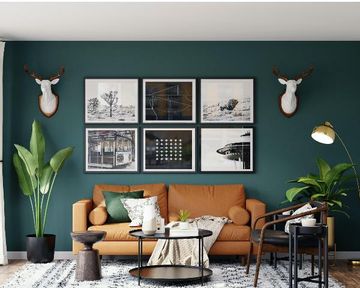Go green and future-proof your home
Quality of life has become a priority for many homeowners during the pandemic. When you are spending most of your time living and working at home, there’s an even greater need to create a living space that is comfortable, functional and hygienic.
“Green living is not a new concept, but it has become more than just a nice-to-have as we navigate a world where sustainability and safety must go hand-in-hand,” says Carl Coetzee, CEO of BetterBond. “Research shows that energy consumption in the United Kingdom increased by 30% during lockdown. We see similar escalations in South Africa as families found themselves living, working and even schooling at home. As we adjust to a new normal where the home is a multifunctional space, we expect the demand for energy-efficient features to intensify.”
Coetzee adds that South Africa’s rising energy costs and changing regulations that make it possible to privatise energy supply, will provide further impetus to incorporate sustainable features into the home. “Green building is no longer reserved for high-end homes, and there is a growing cohort of architects, developers and businesses embracing sustainable practices. Green buildings – both new and renovated – command an increase in asset value,” he says. Although it may cost more to build a green home, developers can expect to recoup the costs through increased demand for their units. “Home buyers will also save money in reduced energy and utility costs.”
Coetzee recommends the following six things to consider when buying an energy-efficient home:
Size and layout
Larger homes require more energy to run and the costs are higher for utilities such as water and electricity. But layout also affects energy consumption. Open-plan designs allow for a natural flow of air, good ventilation and natural light but they can be more expensive to heat. Consider the climate of the area where you would like to live and think about your lifestyle when deciding on the energy-efficiency of a home.
Direction
If you want your living areas - such as your lounge and bedrooms - to be warm and light make sure these are north-facing. This will help lower heating costs in winter. During summer, make use of awnings, blinds and block-out curtains to regulate the temperature in these rooms.
Insulation
You can reduce your costs for heating and air conditioning with appropriate insulation. If you find a property that you like, look closely at the insulation or seek a professional opinion. There are various ways of improving insulation, including the fairly simple installation of ceiling insulation to the double-glazing of windows and use of custom-made retractable shutters. It depends on your budget and needs.
Lighting
Switching to sustainable lighting options will cut your energy consumption and electricity bill considerably. LED bulbs use about 75% less energy than incandescent light bulbs and have a much longer lifespan. When viewing new homes, look for features such as skylights and floating staircases that let in natural light and reduce electricity use during the day.
Back-up power
It is a good idea to have a backup system given that load shedding can occur with little warning and that many people are working from home. Inverters and battery systems will ensure that you can keep working and using appliances at night or when there are power outages.
Smart technology
Homes that are functional and efficient will sell, so invest in a property that incorporates smart technology. One of the home design trends to emerge from the pandemic is a demand for touchless appliances. Homeowners want to minimise contact with surfaces and appliances to optimise hygiene in the home. Smart technology also extends to climate-control automation, lighting, security and CCTV systems and even the way in which your appliances operate.
Outside areas
Irrigation systems, pool pumps, outdoor lighting and other external features can add to your monthly energy costs. Look for gardens designed to conserve water with indigenous plants and rainwater irrigation. Homes with rainwater harvesting options are also a good option. One thing South Africa has plenty of is sun, so make the most of it by including solar-powered lights and solar panels on the roof to provide additional household energy, or to heat the swimming pool.
“As we emerge from the pandemic, and with the urgency of climate change upon us, we realise the pressing need to reimagine the way we live,” says Coetzee. “New technologies and a greater focus on wellbeing will see green homes become an intrinsic part of a quality lifestyle.”

